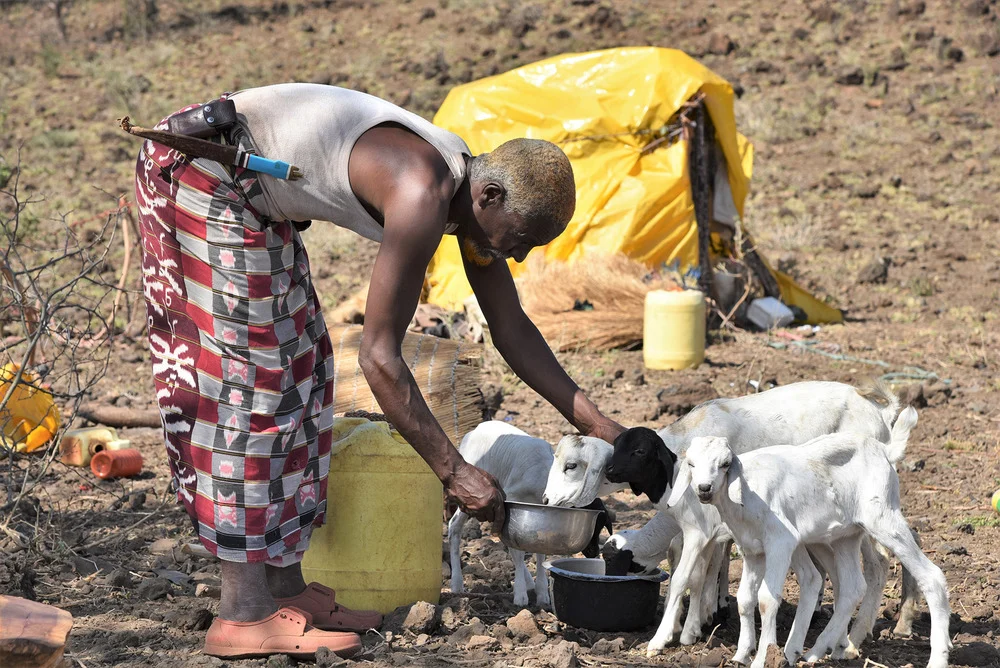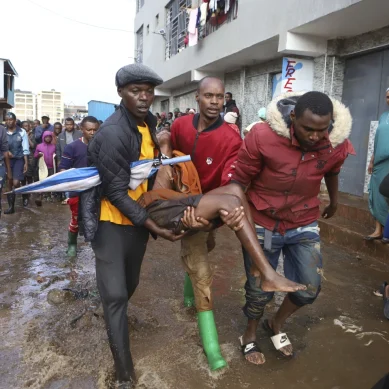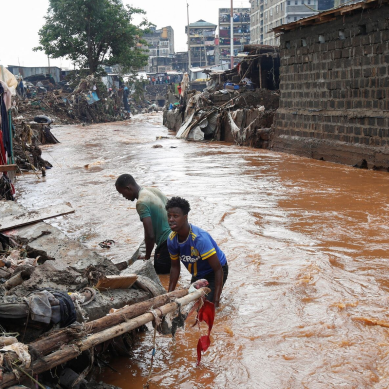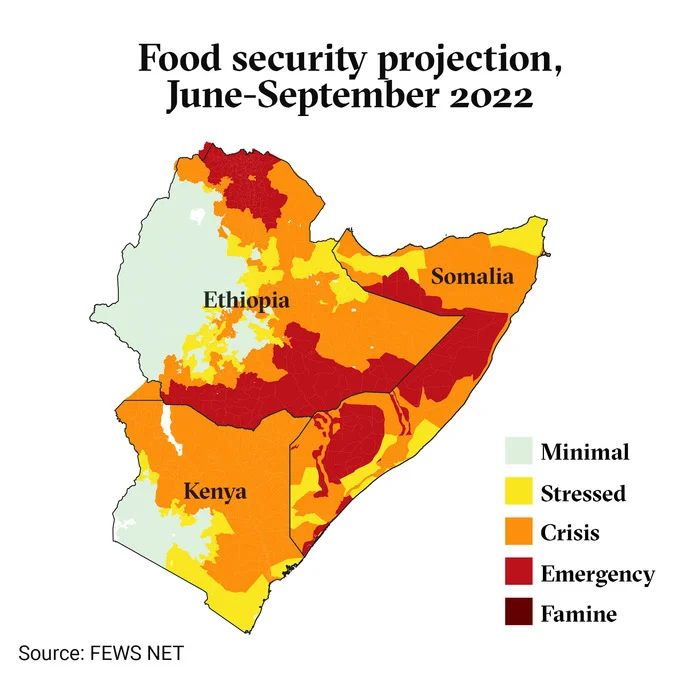
Hammered by four droughts in a row, as many as 17 million people are going hungry in three countries in the Horn of Africa, with aid agencies warning that the hardest-hit areas are threatened by famine.
In the arid pastoralist regions of southern Ethiopia, northern Kenya, and much of Somalia, the lack of water and pasture has killed millions of animals that herders rely on for their livelihoods. That has left households destitute, with deaths among the most vulnerable, especially young children.
Worse is on the way. The La Niña weather system that has caused an unprecedented four consecutive droughts across the region is still in effect. There is now a “concrete risk” that the October to December rains will fail once again, propelling the disaster to a whole new level.
“We must meet the current humanitarian needs now if we are to avert an even bigger crisis in six months’ time,” Sean Granville-Ross, Africa regional director for the aid agency Mercy Corps, told The New Humanitarian.
The current response is not enough. The $4.4 billion UN appeal is “woefully” underfunded, according to the aid agency Oxfam. A separate donor pledge of $1.4 million made in April to cover the next six months has raised only $400 million in new money.
“It’s an indication of the multiple catastrophes around the world that are vying for the attention of the donors,” said Granville-Ross. “Back in February, we thought [the Horn of Africa] was gaining momentum, and then Ukraine came along.”
“We’re living with it again – even when we thought we’d learnt the lesson of how dangerous a delayed response can be.”
As with the Somalia famine of 2011/2012, when a slow-motion response cost 260,000 lives, there was early warning of this impending crisis, with alarm bells being rung as far back as 2020. But “we’re living with it again – even when we thought we’d learnt the lesson of how dangerous a delayed response can be,” noted Jeremy Taylor, advocacy adviser for the Norwegian Refugee Council.
It’s not just drought that’s driving needs. Food prices have been rising around the globe since last year – the consequence of higher costs for fuel, fertiliser, and shipping. The war in Ukraine, which has blocked the export of millions of tonnes of wheat and maize from Black Sea ports, has driven an additional spike in cereal prices.
The cost of a typical food basket has risen by 66 per cent in Ethiopia and 36 per cent in Somalia. In the worst-affected parts of Kenya, the emergency sale of livestock means prices are at their lowest since 2011. In all the three countries, women are bearing the brunt of the crisis – they are the last to eat in each household, and the first to be displaced.
Conflict and political instability are exacerbating the impact of climate shocks in the region. In Somalia, the jihadist group al-Shabab controls much of the countryside and is hostile to Western aid agencies. Fear of falling foul of international anti-terror legislation acts as an additional barrier to foreign aid operations.
But there is “enough to do without getting close to al-Shabab areas”, said an aid worker, who asked not to be named due to the sensitivity of the issue. “That’s a reflection of both the scale of the needs, and the limitation of the response.”
Across the region, pastoralists who have lost their animals are heading to informal settlements on the outskirts of towns and cities. Without livestock to restart their lives, they become part of a precarious class of new urban poor.
More severe droughts are almost certain to continue scorching the region as a consequence of climate change.
“Not only do we need to meet immediate needs, but to also strengthen communities’ future resilience,” said Granville-Ross. “That’s where we need to have an urgent conversation with host governments, donors, and international organisations.”
The following is a snapshot of the critical needs affecting the Horn of Africa, as well as neighbouring Sudan and South Sudan, which are also facing large-scale food deficits.
- The New Humanitarian report











